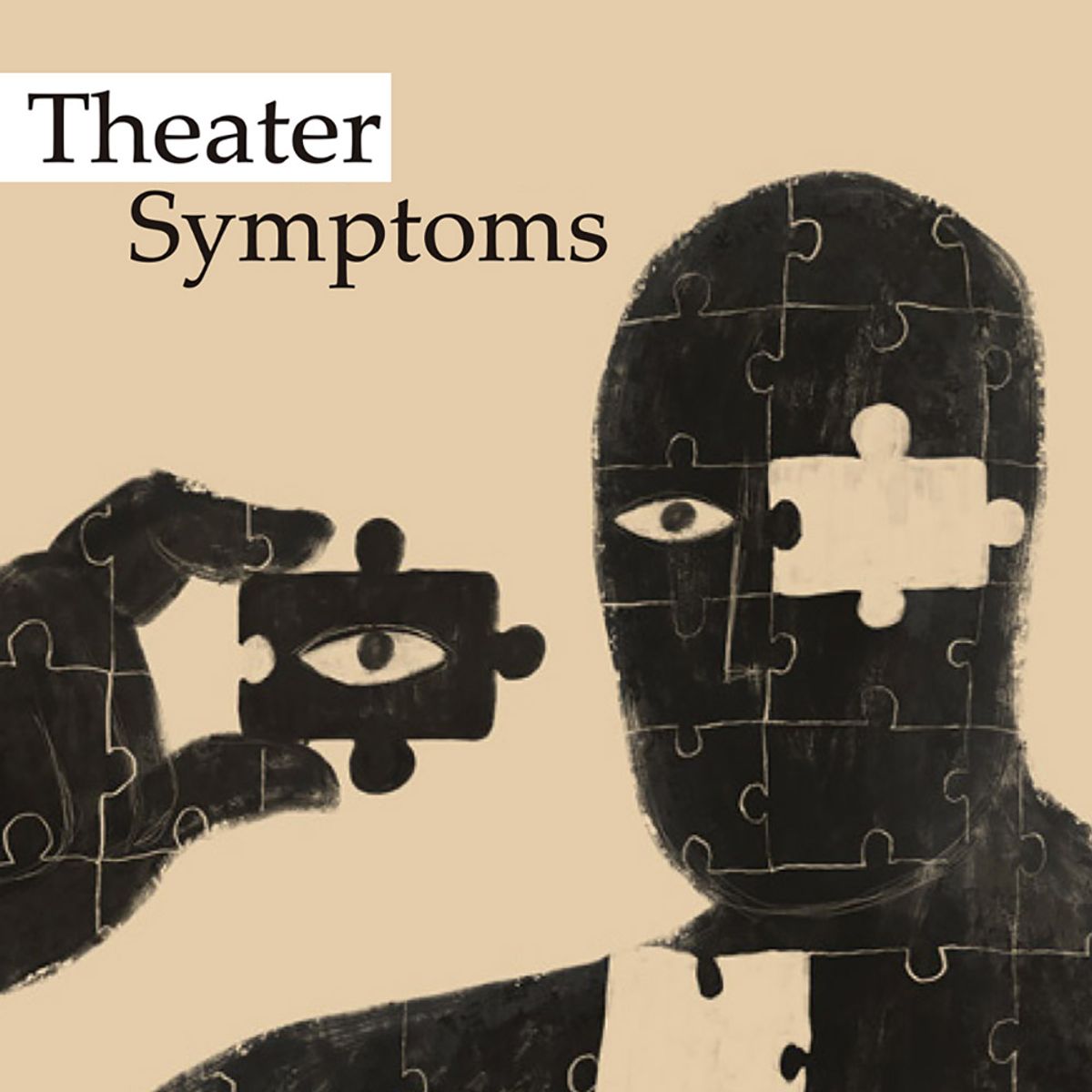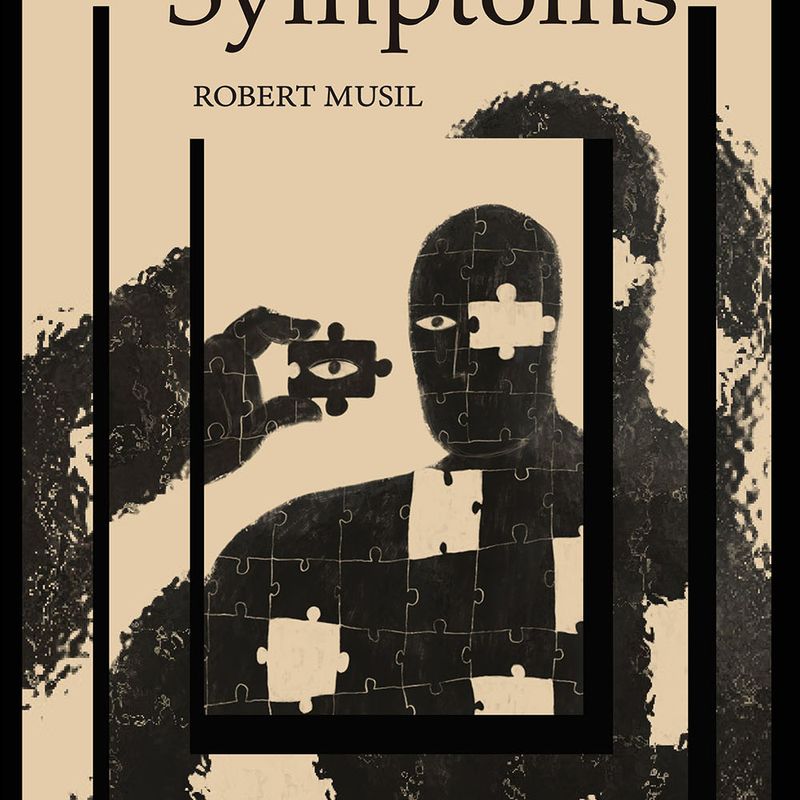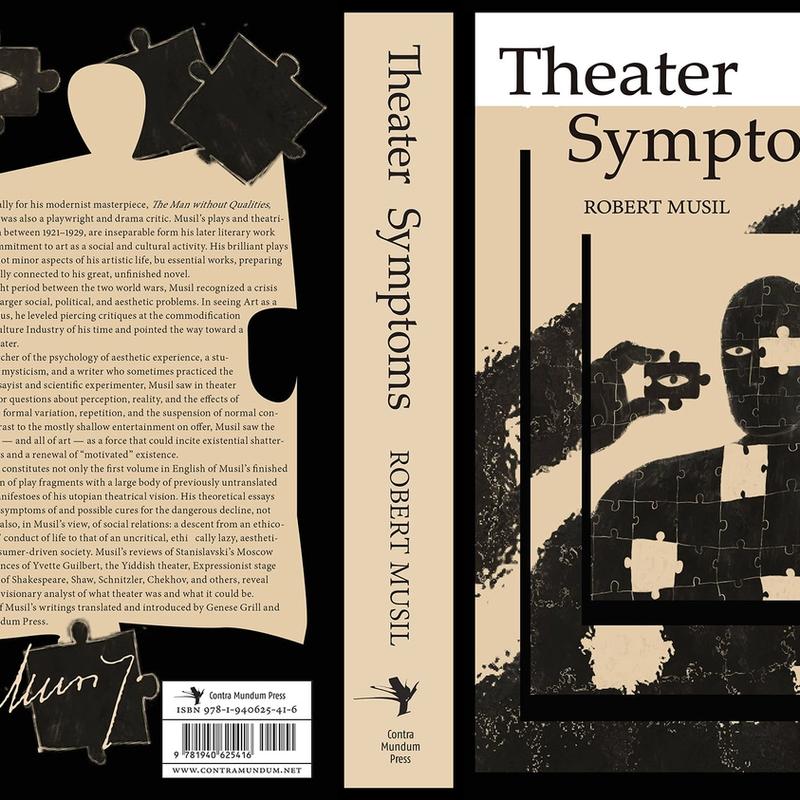Student work
Musil Cover
Yanfen Liang
ARTS 310 (Graphic Design II) #junior #senior | 2020 | New York, USA
The task challenges students to design a conceptual cover for Robert Musil’s Theater Symptoms, published by Contra Mundum. The student’s solutions should provide an interpretation of both the content of the book, and its witty & sardonic style. The synopsis of the book is used (edited) to typeset the back cover text. Students are encouraged to be bold, daring, and unorthodox.
I love to bring guests into the classroom, to share important knowledge with the students, like artist & translator Genese Grill for this research- and content-driven book cover assignment part of my graphic design class. The people involved in my book projects and my familiarity with the research and execution of these projects generate a global interest worth sharing, for cultural, technical, and design ethical reasons.
Students love the project because it has a clear goal, and I enjoy seeing them focused on the opportunity rather than on the challenge. This approach helps design students create content-rich, æsthetically developed, and creatively insightful visual communication design, and also in a fun way.
Material: Pencil, Photoshop, InDesign, Acrobat.
Student statement:
After reading related materials and works about Robert Musil, what impressed me is that, as a critic, he had unique ideas and concepts about art and the world through theater. Many people think that he had a utopian understanding of literature, which may also caused him to be critical of the outside world. These are all manifested in his evaluation of drama; for example, most of the evaluations are negative. He is full of disgust for goods that are only there to make money; He preferred works of art with thought and spirit. Through these understandings, I summarized several important points such as drama, duality (utopian thinking still exists in the context of fascism), timeline, thought, and scrutiny, and I made a few drafts. For example — a Musil looking in the mirror on the stage, walks on a dim but illuminated street (but cannot tell whether it is going forward or backward), the eyes of scrutiny and observation, and the dramatic masks comedy and tragedy. Quickly I discovered that those were not very representative and did not convey the feeling of deep thinking. So I kept searching for images that fit my mind, when I encountered a black figure shaping itself, an artwork called “Hombre Puzzle” (Puzzle Man) by Spanish illustrator Illot. That was like looking into a Musil’s experience. Every experience of each person will become a part of the body. At the same time, one hand grasps an eye puzzle, both eyes look straight ahead as if to examine and observe, but at the same time, they are also observing themselves. In order to stress the meaning in my application, I divided the picture into three stages, from blur to clear, to show how the personal experience changed and clarified the spirit, making the man a bold observer, and a critical thinker.





